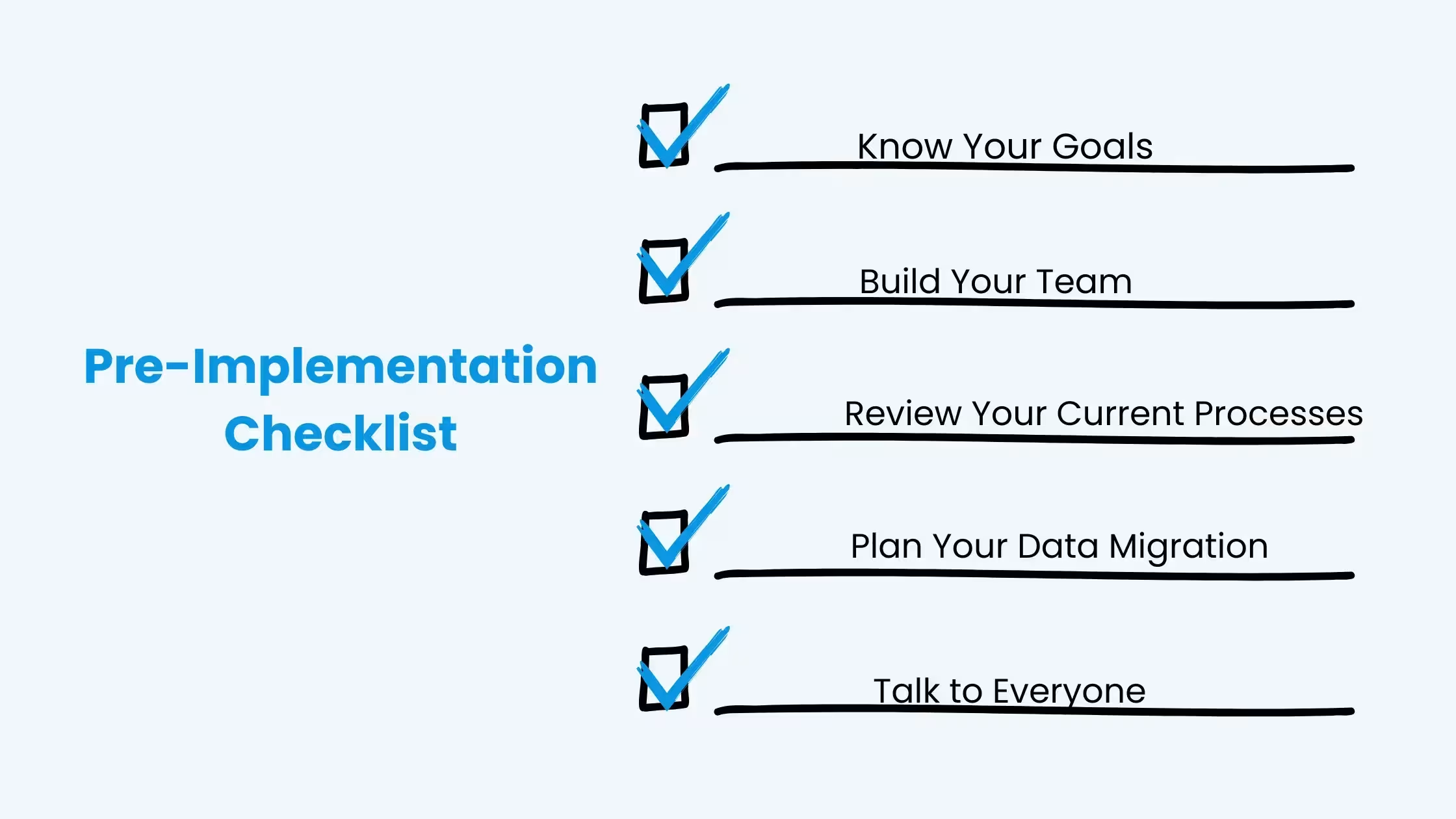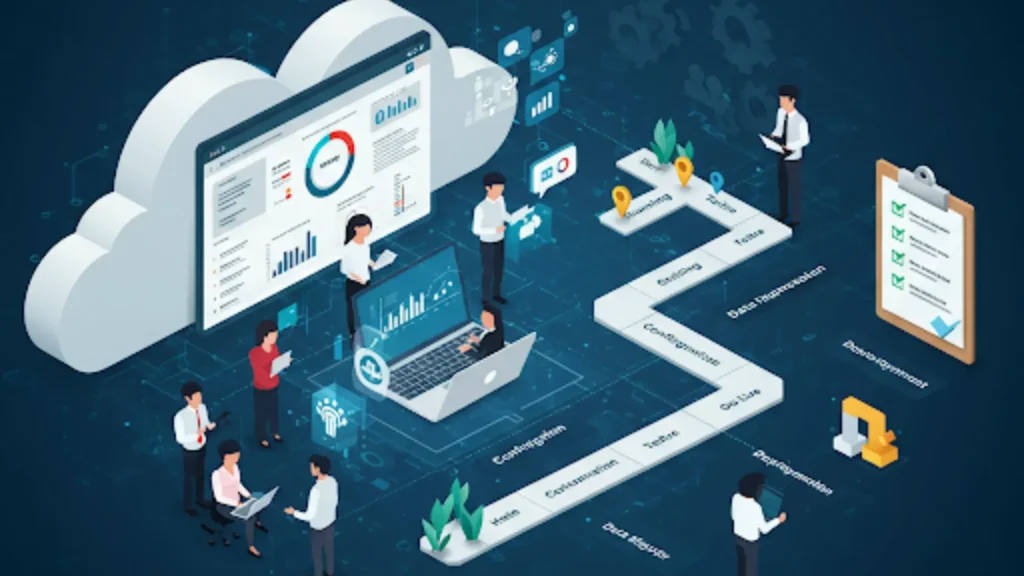Are you trying to manage a large amount of data while combining your HR and finance systems? Workday processes often feel overwhelmed by the complexity of implementing a new system like Workday. The pressure to get it right, avoid data errors, and make sure everyone can use the system effectively is high.
Workday aims to simplify this by bringing everything together in one place for a smoother experience. But how can you achieve that? This guide will outline the Workday implementation process in clear steps, helping you handle any challenges and successfully launch the system.
Why Workday?
Workday is a powerful tool that helps businesses solve everyday problems. Here’s why companies use it:
- All-in-One Platform: Workday brings your HR, finance, and planning data together in one place. This makes it easy to find and access the information you need.
- Automated Tasks: Workday saves time and reduces errors by handling repetitive tasks automatically. Tasks like employee onboarding, expense approvals, and performance reviews can be done automatically, allowing your team to focus on important projects.
- Better Decision Making: You can make smarter business decisions with real-time data and clear reports. You gain insights into your workforce and financial performance, which helps you grow and meet your goals.
- Easy to Use: Workday’s design is clear and easy to use. Your team can learn to use it quickly, which helps them work more efficiently and reduces interruptions.
Pre-Implementation Checklist: Preparing for the Big Day

Before you set up Workday, make sure you are ready. Here’s a checklist to help you prepare:
- Know Your Goals: Clearly define what you want Workday to achieve for your organization. Do you want to improve efficiency, cut costs, increase data accuracy, or make better decisions? Having clear goals will guide your implementation process.
- Build Your Team: Assemble a skilled group with the right expertise. Include people who know how to use Workday, understand data management, and follow project management best practices.
- Review Your Current Processes: Start by looking closely at your company’s HR and finance processes. Find areas that need improvement, simplify workflows, and remove any unnecessary steps before you set up Workday.
- Plan Your Data Migration: Make a clear plan for moving your data to Workday. Make sure your data is clean, accurate, and formatted correctly before transferring it.Accurate data is important for successfully implementing Workday.
- Talk to Everyone: Keep all stakeholders informed about the project’s progress and potential impact. Regular communication, including updates, training sessions, and feedback opportunities, is key to a smooth transition and user adoption.
Deployment Steps: How to Implement Workday Step-by-Step
- Planning and Discovery: Start by understanding your business needs. Create a clear project plan that includes timelines, key milestones, and assigned tasks.
- Design and Configuration: Next, configure Workday to match your business processes. Proper setup and configuration are crucial at this stage. Clearly define how the system will work to meet your specific needs. Configure business processes, security settings, organizational structures, and data models to ensure they meet your requirements.
- Integration and Testing: Connect Workday with other essential systems, such as payroll, benefits administration, and accounting software. Conduct thorough testing of all integrations to ensure data accuracy and seamless functionality. Ensuring proper integration between all systems is vital for the systems to function as one.
- Data Migration: Move your data from old systems to Workday. Make sure that the data is accurate and complete. Double-check the migrated data to ensure it’s correct and complete.
- Training and Onboarding: Provide comprehensive training to your employees on how to use Workday effectively. Workday onboarding is vital for user adoption. Provide clear instructions, user guides, and hands-on training sessions. Create user guides and offer hands-on training to ensure employees are comfortable and confident using the platform.
- Go-Live and Support: Launch Workday and support your team in addressing any issues or questions. Establish a support system to address any issues and ensure everyone is comfortable using the system.
Common Challenges: What to Watch Out For
Even with careful planning, you may face challenges:
- Data Problems: Moving large amounts of data can be complicated. You may run into errors, inconsistencies, or missing information.
- Integration Issues: Connecting Workday to other systems can be hard. It requires thoughtful planning and careful execution.
- People Don’t Like Change: Some employees might resist adopting a new system, requiring effective change management strategies.
- Project Goes Over Budget or Time: Unexpected issues, scope creep, or resource constraints can lead to project delays and cost overruns.
Best Practices: Tips for Success
Here are some best practices to help you avoid common pitfalls and ensure a successful Workday implementation:
- Involve Employees from All Departments: Get employees from different departments involved in the project to make sure their needs are met.
- Use Agile Methods: Divide the project into smaller, manageable steps and test each step as you go.
- Focus on Change Management: Create a clear plan for managing change to help users adapt and overcome resistance.
- Use Workday’s Resources: Take advantage of Workday’s documentation, training materials, and support resources.
- Test, Test, Test: Thoroughly test everything in the system before going live. This will help you find and fix any issues.
- Plan for Support: Create a plan to support your team after the launch. This will help them succeed in the long run.
Looking for a reliable Workday implementation service?
If you’re feeling overwhelmed by the complexities of implementing Workday, don’t worry. Everite Solutions can help. We are experts in Workday implementation services to make the process smooth and successful. Our team of experienced consultants will help you from planning to launch and ensure you get the most from your Workday investment.
Conclusion:
Implementing Workday might feel challenging, but with careful planning, precise execution, and ongoing support, it can improve your business. Follow these steps and best practices to launch successfully and use the system effectively. A successful implementation means more than just installing software. It’s also about helping your team adjust and succeed in a new digital environment. Contact Everite Solutions today to learn how we can help you achieve a seamless Workday implementation.


